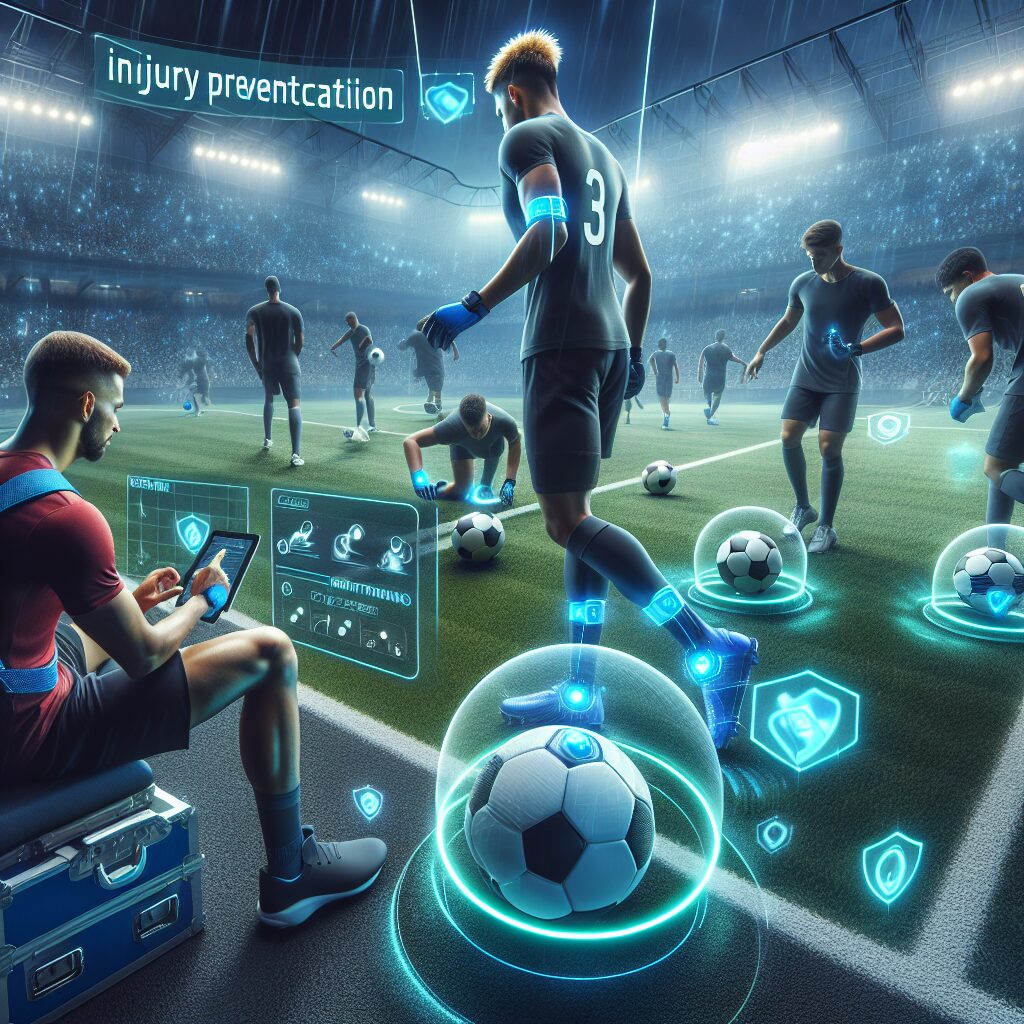Advancements in sports have always been driven by technology, and the impact of these advancements cannot be underestimated. From enhancing athlete performances to revolutionizing how sports are viewed by fans, technology has transformed the way sports are played, experienced, and analyzed. One unique fact that highlights the significance of technology in sports is the introduction of the Hawk-Eye technology in tennis. This system uses sophisticated cameras and computer algorithms to track the trajectory of the ball, ensuring accurate line calls and eliminating human errors. Such innovations not only enhance the fairness of the game but also provide a new level of excitement for both players and spectators.
In addition to improving the accuracy and fairness of sports, technology has also revolutionized training methods and performance analysis. Athletes now have access to advanced training equipment, such as wearable sensors that monitor their movements and provide real-time feedback on their performance. Video analysis software has also become an essential tool for coaches and athletes to analyze their techniques and strategies, pinpoint areas of improvement, and devise effective training plans. These advancements play a crucial role in pushing the boundaries of human performance and elevating the level of competition in sports.
Moving forward, the following key takeaways will be discussed in more detail: the impact of technology on athlete performance, the changing viewing experience for fans, and the ethical considerations surrounding the use of technology in sports. By delving into these key areas, we will gain a comprehensive understanding of how technology continues to shape the world of sports and its implications for athletes, fans, and the sporting industry as a whole. So, let’s dive into the remarkable impact and technological advancements ushering in a new era in the world of sports.
Key Takeaways
1. Technology advancements in sports have significantly impacted the way athletes train and compete, leading to improved performance and injury prevention.
2. The use of data analytics and wearable devices has revolutionized sports performance analysis, providing athletes and coaches with valuable insights to enhance training strategies.
3. Virtual reality (VR) and augmented reality (AR) applications have transformed the fan experience, allowing them to engage in immersive environments and gain a deeper understanding of their favorite sports.
4. The integration of technology into sports equipment, such as smart helmets and tracking systems, has heightened safety measures and enabled real-time monitoring of athletes’ physical condition.
5. Sports broadcasting has been enhanced through the implementation of advanced camera technologies, such as 360-degree cameras and video replay systems, delivering more engaging viewing experiences for fans worldwide.
How have advancements in technology impacted sports?
1. Enhancing Performance
The integration of technology in sports has revolutionized the way athletes train and compete. High-performance wearables, such as smart clothing and fitness trackers, enable coaches and athletes to collect real-time data on various performance metrics. This data-driven approach allows for more precise training programs, personalized coaching, and ultimately improved athletic performance.
Furthermore, advancements in equipment technology have also contributed to enhancing an athlete’s performance. From innovative materials used in sports gear to state-of-the-art sports equipment, such as carbon fiber composites in tennis rackets or aerodynamic bike frames, technology is constantly pushing the boundaries of what’s physically possible.
2. Sports Broadcasting
Technological advancements have had a profound impact on sports broadcasting, allowing fans around the world to access sports content with ease. High-definition cameras, super slow-motion replays, and aerial drones provide viewers with a more immersive and engaging experience. Additionally, the introduction of virtual and augmented reality technologies has opened up new possibilities for fans to experience live sporting events from the comfort of their homes.
Social media platforms and streaming services have also transformed the way sports content is consumed. Fans can now follow their favorite athletes and teams in real-time, engage in online discussions, and access exclusive behind-the-scenes content—creating a more interconnected sports community.
3. Injury Prevention and Player Safety
Advancements in technology have greatly contributed to improving player safety and preventing injuries in sports. Wearable sensors and devices can measure an athlete’s biomechanics and detect potential injury risks, allowing coaches and medical staff to intervene before an injury occurs. Additionally, high-tech protective gear, such as impact-absorbing helmets or body armor, provide athletes with enhanced protection and minimize the risk of severe injuries.
In sports like soccer or football, the introduction of video assistant referee (VAR) technology has helped ensure fair play and reduce the number of controversial decisions that could potentially lead to injuries or disputes.
4. Data Analysis and Performance Optimization
The use of advanced analytics and data analysis tools in sports has revolutionized the way teams strategize and optimize performance. Coaches and analysts can leverage vast amounts of data collected during training and matches to gain valuable insights into players’ strengths and weaknesses, opponent analysis, and overall team performance. This enables them to make data-driven decisions, develop effective game plans, and maximize their chances of success.
Furthermore, technology has facilitated the development of sophisticated modeling and simulation techniques, allowing sports scientists to study and optimize various aspects of performance, such as running biomechanics, ball trajectories, or tactical formations.
5. Fan Engagement and Interactivity
Technology has brought fans closer to their favorite sports and athletes, fostering a sense of community and enhancing fan engagement. Social media platforms, dedicated sports apps, and interactive websites provide fans with exclusive content, live updates, and opportunities to interact with athletes and fellow enthusiasts. Furthermore, virtual and augmented reality technologies offer immersive experiences, such as virtual meet-ups with athletes or interactive stadium tours, further strengthening the bond between fans and sports.
6. How can you leverage technology for a better sports experience?
To make the most out of technological advancements in sports, consider the following tips:
- Stay updated: Keep yourself informed about the latest advancements in sports technology to stay ahead of the curve.
- Embrace wearables: Explore wearable sports technology to track your performance, set goals, and improve your training routine.
- Engage with the sports community: Join online sports communities, follow your favorite athletes and teams on social media, and participate in discussions to enhance your overall sports experience.
- Utilize data-driven insights: If you’re a coach or player, leverage advanced analytics tools to gain valuable insights that can enhance performance and optimize strategies.
- Try virtual experiences: Explore virtual reality or augmented reality sports experiences to immerse yourself in the world of sports like never before.
Frequently Asked Questions
1. How has technology impacted sports?
Technology has revolutionized the world of sports by enhancing performance analysis, player safety, and fan engagement. Advanced tracking systems, video analysis software, and wearable devices have allowed coaches and athletes to gain deeper insights into game strategies and player performance.
2. What are some examples of technological advancements in sports?
Some notable advancements in sports technology include the introduction of instant replay systems, goal-line technology in soccer, Hawk-Eye technology in tennis, and player tracking systems in basketball. These innovations have significantly improved the accuracy of decision-making during games.
3. How does technology contribute to player safety in sports?
Technology has played a crucial role in improving player safety in sports. The development of impact sensors, concussion detection systems, and protective equipment innovations has helped in detecting and preventing potential injuries. Additionally, virtual reality training programs allow athletes to simulate risky scenarios and practice appropriate techniques in a controlled environment.
4. Can technology enhance fan engagement in sports?
Absolutely! Technology has transformed the way fans engage with sports. From virtual reality experiences that provide a unique perspective of the game to interactive mobile applications that offer real-time statistics and analysis, fans now have unprecedented access to the sports they love.
5. How has technology affected sports broadcasting?
Technology has revolutionized sports broadcasting by providing viewers with enhanced viewing experiences. Ultra-high-definition broadcasts, immersive audio technologies, and virtual reality broadcasts have made watching sports more immersive and engaging than ever before.
6. Are there any ethical concerns associated with the use of technology in sports?
While technology has undeniably benefitted sports, it has also raised ethical concerns. The use of performance-enhancing technologies, such as doping or genetically modified athletes, raises questions about fair play and sporting integrity. It is important to strike a balance between the advantages technology brings and maintaining a level playing field in sports.
7. How do advancements in sports technology impact training methods?
Advancements in sports technology have revolutionized training methods. Athletes can now utilize virtual reality simulations, biometric tracking devices, and automated training systems to enhance their skills and optimize their performance. Coaches have access to real-time data analysis, allowing them to tailor training programs and make more informed decisions.
8. Can technology improve sports performance analysis?
Yes, technology has greatly improved sports performance analysis. Advanced software and tracking systems provide coaches and athletes with comprehensive data on player movements, tactics, and physical exertion. This information helps optimize strategies, identify areas for improvement, and plan training sessions more effectively.
9. How has technology impacted sports equipment?
Technology has led to significant advancements in sports equipment. From lighter and more durable materials to the development of smart equipment with embedded sensors, technology has improved performance, safety, and comfort. Examples include carbon fiber tennis rackets, aerodynamic racing suits, and smart helmets for impact detection.
10. Will technology continue to influence the future of sports?
Undoubtedly, technology will continue to shape the future of sports. As new advancements emerge, we can expect to see further improvements in athlete performance, fan experiences, and safety measures. The ongoing integration of technology in sports promises an exciting and dynamic future.
Final Thoughts
Impact and Technology: Advancements in Sports have transformed the way we perceive and engage with sports. Whether it’s through enhanced player performance, increased safety measures, or immersive fan experiences, technology has revolutionized the sporting landscape. As we move forward, it is crucial to embrace these advancements responsibly, ensuring that they promote fair play and maintain the integrity of the games we love.
With each new technological innovation, we are presented with exciting opportunities for growth and improvement in the world of sports. The future holds endless possibilities, and as technology continues to evolve, so too will the way we approach and experience sports. Let us embrace these advancements, striving for a harmonious balance between tradition and progress as we continue to push the boundaries of what is possible in the world of sports.




